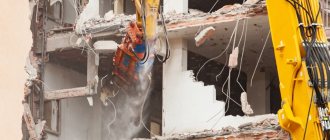Since today, for the most part, residential premises are personal property, partnerships are becoming popular, which themselves make decisions on the management of property belonging to an apartment building (for example, basements, attics, local areas, etc.).
A partnership of real estate owners can be created not only for the joint use of one apartment building, but also for the preservation, maintenance, expansion of the property of several apartment buildings, and the provision of utilities to residents, subject to:
- close proximity of houses with a common border of land plots;
- the presence of general communication systems for engineering and technical support (gas pipeline, water supply and central heating supply pipelines, etc.).
All issues related to housing are regulated by the norms of the Housing Code, as amended, as last amended on January 22, 2019. At the annual meeting of owners of the premises of an apartment building or at an extraordinary meeting, on the initiative of any owner, the charter of the HOA is adopted by counting a majority of votes. It is important to understand that the Charter of the partnership is one of the fundamental documents that defines the main functions, powers and responsibilities of the organization, starting with establishing the procedure for convening and holding a general meeting, notifying members of the HOA about the time, day and place of its holding, and the agenda.
The draft Charter should stipulate:
- who has the right to initiate the convening of a meeting;
- powers of the audit commission;
- the procedure for making changes and additions to the current charter of the partnership.
In connection with the amendments to Chapters 13, 14 of the Housing Code of the Russian Federation, the exclusion of certain articles and the inclusion of a new one, in particular, defining the rights of members of the homeowners’ association and those who are not such, in addition, changes to the rules governing the holding of general meetings, unless changes are made to the adopted earlier the charter, there is a clear threat of forced liquidation of the HOA.
For information
State supervisory authorities have the right to apply to the court for the liquidation of the partnership if, during the inspection, a discrepancy between the charter and the norms of the current legislation is revealed and the shortcomings are not eliminated within the time period established by the order.
Mandatory provisions of the Charter
The mandatory provisions of the HOA charter include the following information, determined by the provisions of Part 2 of Article 135 of the Housing Code:
- on the name of the partnership, which must begin with the words “association of homeowners”, location, subject and purpose of its activities;
- the procedure for the emergence and termination of membership in the HOA;
- the composition and competence of the management bodies of the partnership and the procedure for their decision-making, including on issues on which decisions are made unanimously or by a qualified majority of votes;
- composition and competence of the audit commission or auditor of the partnership.
How are the HOA charter adopted?
To adopt the charter of the HOA (or make changes to it), they are guided by the norms of Art. 45-48 Housing Code of the Russian Federation. At the proposal of the board of the partnership or a group of active owners, no later than 10 days before the scheduled date, in writing under a personal signature or by registered mail with return receipt requested, each owner of an apartment building is sent a notice of the decision to hold a general meeting, indicating:
- who is the initiator;
- in what form the meeting will be held;
- date, month, year, exact time and place of meeting of the owners (or where the data should be transferred if it is decided to conduct an absentee survey);
- pressing agenda;
- in what order can you get acquainted with the documentary materials?
The meeting is considered valid if more than 50% of apartment owners or their representatives take part in it. It is important to pay attention to the fact that the decision made by counting the votes of the present owners also applies to the owners of residential premises who did not participate in the meeting or who voted “against”.
General meetings.
— powers of the general meeting of HOA members
The general meeting of HOA members is the highest governing body of the partnership. Part 2 of Article 145 of the Housing Code sets out issues that cannot be transferred to the board or the chairman of the board of the HOA.
— Issues that cannot be included in the competence of the HOA management bodies
The competencies of the meeting of the HOA board, the general meeting of HOA members and the general meeting of owners of premises in the apartment building should not overlap.
Organization of a home/property owners' association
HOA & TSN
(nuances of the organization)
Recently, there has been a strong trend in the construction of cottage villages, which are essentially a kind of replacement for gardening and vegetable garden partnerships, or a variation of them. The law does not define the concept of a cottage community and this raises a lot of questions, inaccuracies and applications of analogies of law instead of direct norms. Also, many owners of apartment buildings no longer leave the issues of property management, creation of new public facilities and major repairs of existing ones to municipal services and management companies.
Now many houses and cottage communities are switching to a self-government system. Associations of homeowners, partnerships of real estate owners, and initiative groups among residents are organized. In fact, it is one of the most effective and efficient ways to manage real estate and general assets. Agree that the owners are most interested in caring for common property, its safety and improvement. When deciding on independent property management, questions arise: how to register? How to hold a general meeting? How to draw up minutes of a general meeting? And the first, in my opinion, one of the most important questions: how possible is it to realize what is planned? Does the desire match the possibilities?
If we are talking about HOAs, then the answers to most questions are already contained in the Housing Code, judicial practice and court clarifications on this issue are also sufficient. What if it is a new or infrequently used form? For example, combining several houses into one HOA or TSN in a cottage community? The procedures seem to be the same. But there are also big differences that lie in the little things.
If we are talking about merging several residential buildings into one HOA, then we need to take into account several nuances:
Management of common property. This is the main point that must be taken into account. How can you tell if two houses that are separate from each other have common property? At first glance, the answer is obvious: of course not. But if you look closely and carefully analyze the situation, it is quite possible that the answer will change to yes.
So, what can and should unite two apartment buildings:
· Availability of a common border of land plots, according to the Unified State Register of Real Estate;
· Sharing of common property is permitted by the design documentation of these houses;
· Ensuring the operability of the common property of one house depends on and is achieved through technological connection to the common property in another house;
· Availability of infrastructure elements that are intended for use by the owners of the premises of both houses;
But even after checking all the information and making a decision to merge two apartment buildings into one HOA, it is necessary to draw up a protocol of the general meeting of owners on the creation of such a HOA. Decisions on the creation of such a united HOA are made by the owners of both buildings at general meetings of owners in each apartment building. The decision will be considered adopted if a majority (at least 2/3) of the owners of the premises of each building votes “for”.
Also, when drawing up the minutes of the general meeting of owners, it is necessary to take into account what features of the adoption and execution of these decisions are established by the federal executive body, which carries out the functions of developing state policy and legal regulation in the field of construction, architecture, urban planning and housing and communal services.
After drawing up the protocol and developing the necessary internal documents (the charter of the HOA, the decision to create an HOA), it is necessary to collect a package of documents for registering the HOA with the tax office; currently, there is no need to go directly to the tax office; all necessary actions can be performed by a notary, in fact, the notary will do it for you will submit documents to the tax office and issue documents on registration of the HOA.
However, even after registering an HOA with the participation of two houses, you may encounter misunderstandings on the part of the residents. In judicial practice, there are cases when people go all the way to the Constitutional Court of the Russian Federation in an attempt to prove the impossibility of creating one HOA for two houses. Judicial practice, as a rule, develops in favor of the HOA. Take, for example, the ruling of the Constitutional Court No. 708-O dated March 27, 2018. In the descriptive part, the Court makes it clear that if the houses are connected, for example, by a single foundation, then the creation of one HOA is legal and does not contradict the legislation of the Russian Federation.
It should also be noted that in accordance with the letter of the Ministry of Construction of Russia dated 08/01/2016 N 24192-OD/04, such an HOA can be created by the owners of premises in several apartment buildings, the number of apartments in which totals no more than thirty. However, paragraph 1 of part 2 of Article 136 of the Housing Code of the Russian Federation (as amended by the Federal Law of 06/04/2011) does not apply to HOAs created before 06/18/2011.
As can be seen from the practice of application and explanations of government bodies, each specific case needs to be examined in detail, since each case is unique and it is not always possible to apply the law by analogy.
With a partnership of real estate owners, the situation is a little more complicated, since this type of real estate management is not separately described in the Housing Code of the Russian Federation, most of the rules are applied by analogy, and there are some nuances in the organization of management and management of suburban real estate.
The creation of a partnership of real estate owners is usually used to organize the management of suburban real estate (hereinafter referred to as TSN).
The term Association of Real Estate Owners is not defined in any way by the Housing Code of the Russian Federation, but Art. 135 of the Housing Code of the Russian Federation indicates that a Homeowners Association is a type of partnership of real estate owners. Thus, we can conclude that the Association of Real Estate Owners is a more global term and the application of the rules of law regulating the activities of HOAs can also be attributed to the activities of TSN.
To create a TSN, it is necessary that the property be located in close proximity to each other. It is not legally determined how much real estate (houses, plots) can be combined into a HOA. But the criterion for unification remains unchanged:
· The presence of common boundaries or the location of property in close proximity to each other;
Availability of general infrastructure (gas, electricity, water, sewerage, roads)
· Dependency of provision of necessary resources between houses (one sewerage system, common road, common water supply)
The goals of creating a TSN are no different from the goals of creating an HOA: managing common property, creating common property and improving the common property of owners.
For the correct formation of the boundaries of the TSN, it is important to clearly understand what is meant by the term “Common boundaries”; the answer to this question is given by the letter of the Ministry of Construction of Russia dated 01.08.2016 N 24192-OD/04: the common boundary of land plots in Part 2 of Article 136 of the Housing Code of the Russian Federation is understood the border of adjacent land plots, which must be confirmed by information contained in the state real estate cadastre.
To register a TSN, a package of documents is required similar to the creation of an HOA; a general meeting is held for all owners wishing to unite (provided that their real estate is within the boundaries of the created TSN), a charter and other documents necessary for registration are drawn up. Documents must be submitted to the tax office to register the TSN.
But if in a residential building it is clear and understandable what property is common, then for suburban real estate this may be a question. Since during the construction of cottage villages or the creation of gardening partnerships, roads and communications are usually registered in the name of the developer or transferred to the balance of the municipality of the area where the property is located.
In the context of the above issues, it should be taken into account that the lack of clear regulation in the legislation of issues of common property in suburban real estate is due to the following points: the development of suburban real estate did not initially imply the presence of common property among the owners of suburban real estate. As a rule, everything that was needed was located either on the land plot (for example, a septic tank, there was no talk of a general sewerage system for a long time), gas and electricity are usually supplied individually to each house, and these networks are never privately owned, but belong to the relevant government agencies . What's left? Water. In most cases, the issue was resolved by the presence of a well or borehole on the site. And only relatively recently cottage villages began to appear in which all these networks are supposed to be present. Thus, it turns out that the purchase of real estate in a cottage village does not automatically entail the creation of a share in the right to infrastructure facilities (water supply, sewerage, roads) in this village. A share in the right to these objects arises in accordance with the Civil Code of the Russian Federation, the Land Code of the Russian Federation and other regulations. In most cases, the owner purchasing real estate in the village begins to pay fees for the maintenance of common property and thus has the right to a share in this property by virtue of the law.
In conclusion, I would like to say that on July 27, 2017, the Federal Law on the conduct of gardening and vegetable gardening by citizens for their own needs and amendments to certain legislative acts of the Russian Federation No. 217-FZ was adopted. Which determines the ownership of public property within the boundaries of the gardening or truck farming area, in proportion to the area of these plots. In accordance with Art. 25 of Federal Law No. 217-FZ of July 27, 2017, the specified property belongs to the right of common shared ownership to persons who are owners of land plots. For the purposes of applying the analogy of law, this makes it much easier to understand the legal regime of common property in a cottage community. But this still remains an analogy of law for cottage communities.
How to get this property on the balance sheet of TSN? After all, none of the owners wants to improve someone else’s property or create public facilities on someone else’s land (which may even be considered illegal). The answer to this question, unfortunately, is not contained in the Housing Code of the Russian Federation, but there are business customs and judicial practice. Based on business customs, it is necessary to contact the district municipality, inform them about the creation of TSN and ask to transfer the objects of interest to the balance sheet of TSN. After completing a certain procedure, most likely the property will be transferred to the balance sheet of TSN. Judicial practice also proceeds from the logic that the common property of the owners should be in the shared ownership of all owners and be on the balance sheet of TSN.
Powers of the HOA board
First of all, the board of the partnership elects from among its members the chairman of the board of the HOA (Part 3 of Article 147 of the Housing Code). Therefore, in the HOA charter it is necessary to fix the term of office of the board and its chairman, as well as the HOA audit commission.
The maximum term of office is 2 years (Part 2 of Article 147 of the Housing Code). Here are the powers that are legally assigned to the HOA board:
1. Draw up estimates of income and expenses of the partnership for the corresponding year, reports on financial activities.
2. Conclude agreements for the management of apartment buildings.
3. Hire and fire workers to service the apartment building.
4. Conclude contracts for the maintenance, operation and repair of common property in the apartment building.
5. Maintain a register of partnership members, office work, accounting and financial reporting.
6. Convene and hold a general meeting of members of the partnership.
How the charter is amended
The procedure for making changes is similar to the adoption of the charter itself. It is imperative to notify all owners of the meeting, its agenda, time and place, and form in writing under a personal signature or by registered mail sent with notification of delivery to the addressee.
Changes can be made only if more than half of the owners of an apartment building managed by the HOA take part, and the majority of respondents who took part in the meeting or in the form of absentee voting using the system vote for the proposed changes and additions.
Attention!
In cities of federal significance - Moscow, St. Petersburg, Sevastopol, holding general meetings of owners in the form of absentee voting using the state information system for housing and communal services has been suspended until July 1, 2021 in accordance with Federal Law No. 267 of 07/03/2016.
The decision entered into the minutes on changes to certain provisions of the HOA charter must be properly registered after paying the state fee and submitting documents to the tax office
If, after checking the activities of the HOA, violations were identified in connection with changes in the current legislation and comments were made to the charter of the HOA, instead of making changes, it is possible to develop and adopt a new charter, since the procedure itself is no different.
If you found this page useful, please recommend it to your friends:
Powers of the chairman of the HOA board
The charter must define the range of issues on which the chairman of the board has the right to make decisions independently (part 2 of article 119, part 2 of article 149 of the Housing Code). For example, give the chairman of the board the right to:
- select contractors and enter into contracts with them on behalf of the partnership;
- select and purchase materials, equipment and other products necessary for the maintenance of common property within the approved budget;
- select and purchase the tools necessary to manage the apartment building within the approved budget (computer, desktop, subscription to a professional magazine, etc.)
What to do if residents disagree?
In this case, owners can act as follows:
- create an initiative group to make changes to the document;
- leave the partnership;
- file a lawsuit or contact the housing inspector.
A meeting may be formed to consider proposals for changes if the request comes from holders of 10% or more of all votes.
If the charter contains clauses that do not comply with legislative norms or contradict the interests of the owners of residential premises, then residents can contact the housing inspectorate with a request to conduct an unscheduled inspection of the HOA (clause 4.2 of Article 20 of the Housing Code of the Russian Federation).
If one of the members of the HOA completely disagrees with the provisions in the charter, and there are no other persons supporting him in this matter, he has the right to independently leave the partnership and receive utility services on the basis of a separate agreement concluded with the board.
Manager at HOA
The manager may be a citizen who was hired to perform management and administrative functions for the maintenance and repair of common property in the apartment building. The manager does not have to own property in the apartment building and be on the board of the HOA. A legal entity can also become a manager in an HOA.
The manager takes office by mutual agreement of the parties; a civil law or employment contract can be concluded with him. In an HOA, the decision to hire a manager is most often made by the board or chairman.
Alteration
The current charter may be amended. This can only be done by convening a general meeting of residents. The entire procedure for amending a document consists of the following steps:
- organization of the general meeting;
- discussion of changes being made;
- holding a vote among residents for each amendment;
- signing the protocol.
If the initiators of changes to the charter are several people, then they submit their proposals to the chairman in writing with a requirement to consider them at the meeting.
Changes to the charter, as in the case of its adoption, are made only if there are ⅔ positive votes from the total number. The new charter must be registered with the tax office, and the local housing authority must be notified of the amendments.
When creating an HOA, members of the association must draw up an important legal document - a charter, which will regulate all activities of the residents' association. When forming and adopting it, it is necessary to be guided by legal norms and take into account the interests of homeowners. The charter is subject to mandatory state registration, after which it acquires legal force.
Contents of the document
The charter must reflect all aspects of the maintenance and service of an apartment building:
- The date and place of its preparation at the general meeting of owners is indicated at the top.
- Location of the house.
- Official name.
- Address (postal).
- General provisions - the HOA is responsible for all property, can make transactions on behalf of the owners, is guided by the charter and legislation.
- The purpose of the partnership is to manage an apartment building, operate its property, repair, and regular maintenance.
- Designation of common property of residents - entrances, stairs, elevators, and so on.
- Partnership property – real estate and movable property in the house and outside it. HOA funds – payments, entrance fees, business income, subsidies and other financial income.
- The management of the partnership is the operation, maintenance, repair of the common property of the owners, the provision of space for rent on the territory of the apartment building.
- Material and other participation of all owners in the maintenance of common property.
- The rights of the HOA are concluding contracts, determining the amount of expenses, carrying out work and providing services to owners, obtaining loans, leasing premises.
- The board and the chairman, their rights and responsibilities.
- Termination of activities.
- The procedure for reporting by the partnership to the owners and the audit commission.
Changes to Law No. 255-FZ obligated all owners of non-residential or residential premises that are part of an apartment building (more than 16 apartments) to independently choose by the end of March of this year the method of managing the house - an HOA or a management company.
In the absence of a decision, the municipality has the right to announce a tender to fill this position.
AUDIT COMMITTEE
5.1. The Audit Commission is elected by the congress of members of the Association from among representatives of organizations - members of the Association in the amount of seven people, for a period of three years.
5.2. The chairman of the audit commission is elected from among the members of the audit commission for the same term.
5.3. Members of the Board of Directors of the Association, as well as members of the Executive Directorate of the Association, cannot be members of the Audit Commission.
5.4. The Audit Commission controls the financial and economic activities of the Association. At the end of the year, the audit commission submits a report approved by the congress of members of the Association.
5.5. The work procedure and structure of the audit commission are determined by the Regulations, which are independently approved by the commission.
5.6. The Audit Commission has the right to involve audit organizations in its work. The executive bodies of the Association are obliged to assist the Audit Commission in fulfilling its functions.







